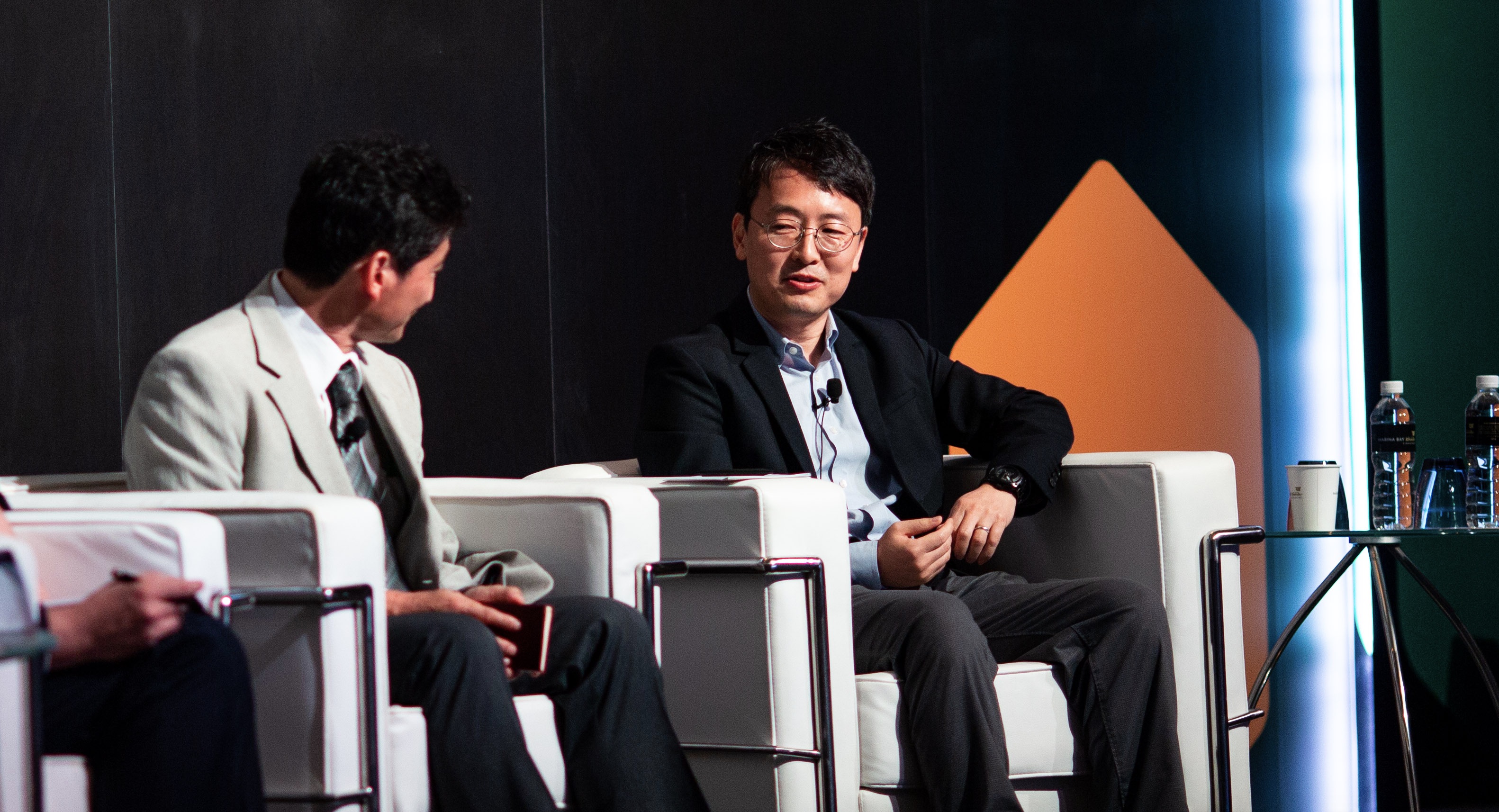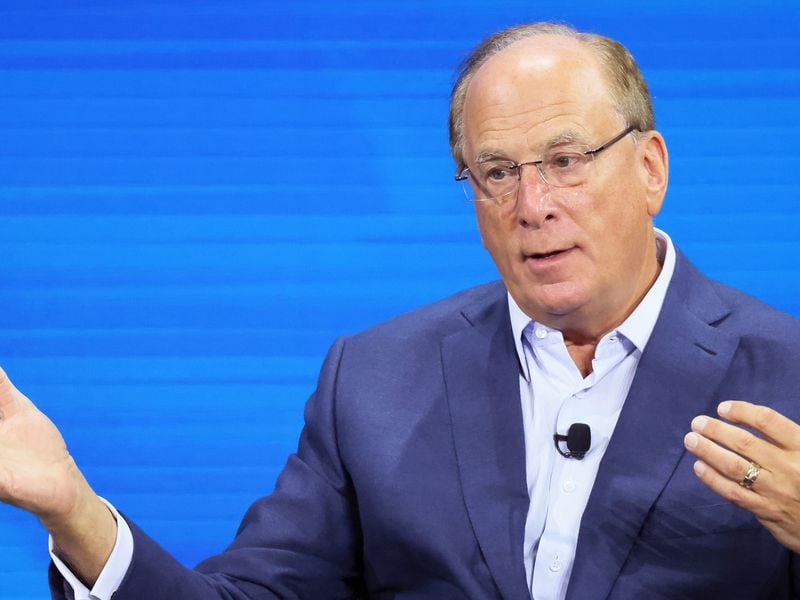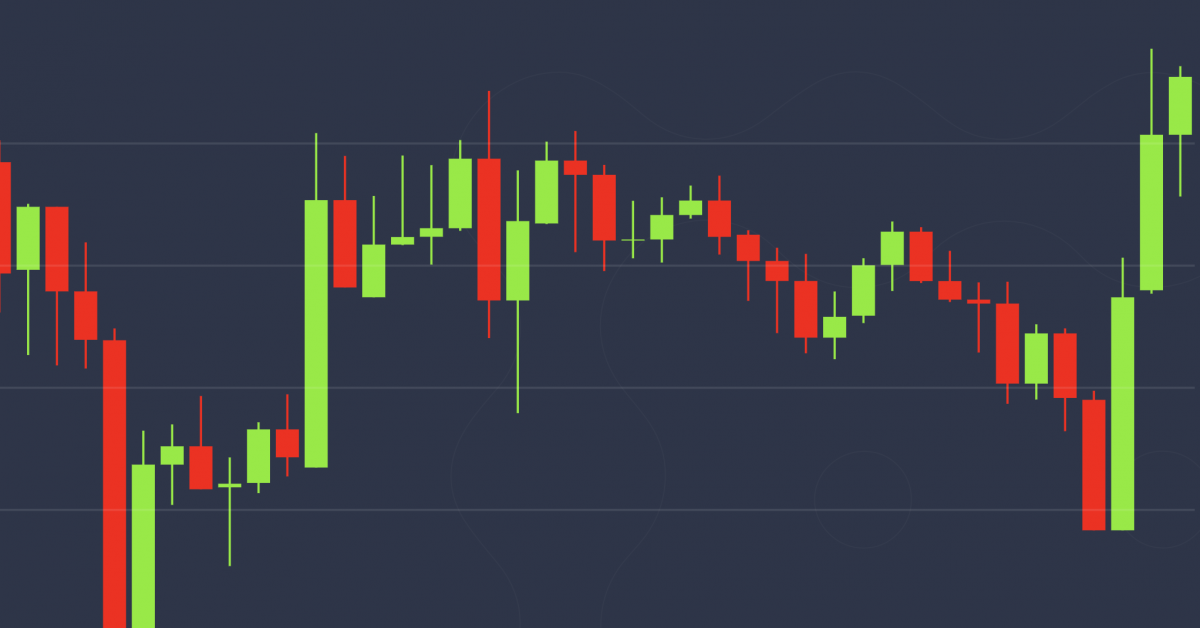Justin Sun Wants More TradFi on Tron, Dogs Over Cats for Memecoins
-
In an interview with CoinDesk, Justin Sun explained why memecoins are more fair than VC-backed tokens, how traders are having better memecoin returns on HTX rather than Binance, and the importance of bringing Chainlink to Tron’s DeFi ecosystem.
-
He also said that he has a slight preference for dog memecoins rather than cat memecoins. Research from CoinGecko shows there’s a market preference for cats over dogs.

01:49
Mega ETF Inflows and Bitcoin Wallet Activity Signal Further Bullishness

03:12
MicroStrategy Plans to Raise $42B to Buy More BTC; Robinhood, Coinbase Shares Fall After Earnings

20:28
The Evolution of Bitcoin L2s: Muneeb Ali on Stacks’ Nakamoto Upgrade

02:19
Spot Bitcoin ETFs Record $870M Inflows as BTC Tests All-Time High
HONG KONG – Getting a sit-down interview with Justin Sun is a difficult process. Logistics are coordinated at the same scale as if he were a head of state, and Sun’s schedule at a conference is organized down to the minute.
Booking Sun requires a secure room; there were visits by advance teams to walk through it and a sweep from security.
When he arrived, there was an entourage, including guards, to push onlookers out of the way
CoinDesk got 20 minutes with Sun on the sidelines of Chainlink’s SmartCon during Hong Kong Fintech week to talk about everything from why memecoins are more fair than VC-backed tokens, as well as why Chainlink is bringing more TradFi to Tron.
Along the way we asked if he’s a dog or a cat person, as the memecoin market demands.
This interview has been edited and condensed.
On the fairness of memecoins
CoinDesk: Do you think memecoins are more fair than venture-capital-backed tokens? There’s been plenty of criticism on how these tokens only enrich the elites and leave retail traders diluted.
Sun: Fair launch is one of the biggest advantages of meme coins. Everyone can track the tokens, and if anyone moves large amounts of assets without the community knowing, the price will drop significantly.
We’ve seen instances called “rug pulls” when this happens. Fair distribution and fair launches are key. I tell memecoin developers on Tron that if they want to be at the top, they need to ensure fair launch and distribution.
CoinDesk: There has been a shift in market structure with major cryptocurrencies and tokens like bitcoin, Ethereum and Tron, as well as memecoins and VC coins. Do you see this trend continuing over the next two years, with a focus shifting back to the community?
Sun: I definitely see people focusing back on the community. It’s very impressive.
Recently, HTX has launched memecoins on our platform, and most have had great returns – around 100% or more.
If you look at Binance, their coin returns are actually very low, even though Binance has a stricter listing strategy compared to Tron.
For Binance, you need to prepare for about half a year just to get listed. The main tokens listed there are VC-backed, and their performance has been disappointing, often declining by 50% or more. If you bought a VC-backed coin at launch on Binance, you probably lost a lot of your investment.
But with HTX, there are no listing fees, and we list tokens we believe have a strong community. New coins on HTX can see returns up to 500x.
HTX is focused on meme tokens, and you can see the trend difference. Speed is also crucial. Meme coins can capture attention quickly, and I study memecoin trends daily.
The narratives change constantly, keeping things exciting and never boring. One day it might be a new Elon Musk meme coin, the next an a16z coin, or even religious, AI or art-themed memecoins. New meme concepts are always emerging.
CoinDesk: With memecoins, are you a dog or a cat person?
Sun: I’d say like 60% dog.
Bringing more TradFi onto Tron
On Thursday at SmartCon, the Tron DAO announced its participation in the Chainlink Scale program, adopting Chainlink Data Feeds as the official data oracle solution for its DeFi ecosystem, a $6.9 billion universe according to data from DeFi Llama, which is important for DeFi apps that rely on outside data feeds like like JustLend and JustStable.
CoinDesk: Tell us more about Tron’s recent announcement with Chainlink.
Sun: We’ve been preparing this collaboration with Chainlink for a long time. I’m happy we completed this before the smart contract launch.
Chainlink is the top smart contract oracle in the world, and Tron has over $60 billion in stablecoins and active DeFi and real-world asset (RWA) applications. This partnership can empower traditional financial institutions to enter the Web3 space through our stablecoins and applications. Chainlink plays a crucial role in this.
CoinDesk: Do you expect more traditional finance (TradFi) to join Tron after Chainlink’s integration?
Sun: Definitely. Tron’s stablecoin is a critical infrastructure, especially in Asia. Today, if you visit any crypto or even fiat exchange store, you’ll see Tron USDT is widely used.
Many people who don’t fully understand crypto still have Tron addresses for receiving stablecoins. With Chainlink’s integration, more users will gain access to fiat gateways, which will benefit on-chain users and merchants across Asia.
CoinDesk: Why are stablecoins so prominent on Tron compared to Ethereum? There’s more USDT issued on Tron than Ethereum.
Sun: Stablecoins on Tron are significant because many people in Asia use them as a fiat gateway to enter the crypto space or to move assets.
CoinDesk: What are your plans for 2025?
Sun: Our main priority at the end of this quarter is USDD [Tron’s stablecoin]. Recently, Dai migrated to USDS, moving away from a decentralized model. USDD aims to fill that gap as a decentralized stablecoin.
We’ll upgrade the USDD smart contract system by the end of the year, adding new functions to enhance decentralization and make it a stablecoin option for everyone.
Alongside the Chainlink collaboration, we’ll work with DeFi developers and major players like Aave. For memecoin trading, we’ll also collaborate with developers to launch new projects, including AI memes, by the end of this year and early next year.
Edited by Bradley Keoun.
Disclosure
Please note that our
privacy policy,
terms of use,
cookies,
and
do not sell my personal information
have been updated
.
CoinDesk is an
award-winning
media outlet that covers the cryptocurrency industry. Its journalists abide by a strict set of
editorial policies.
CoinDesk has adopted a set of principles aimed at ensuring the integrity, editorial independence and freedom from bias of its publications. CoinDesk is part of the Bullish group, which owns and invests in digital asset businesses and digital assets. CoinDesk employees, including journalists, may receive Bullish group equity-based compensation. Bullish was incubated by technology investor Block.one.
:format(jpg)/s3.amazonaws.com/arc-authors/coindesk/ff7c302f-d3ab-4905-92e1-2f7f5106d13c.png)
:format(jpg)/s3.amazonaws.com/arc-authors/coindesk/6c6bb5af-692c-4fcf-9f8b-a75d0549effd.png)
Shaurya is the Deputy Managing Editor for the Data & Tokens team, focusing on decentralized finance, markets, on-chain data, and governance across all major and minor blockchains.
Follow @shauryamalwa on Twitter








